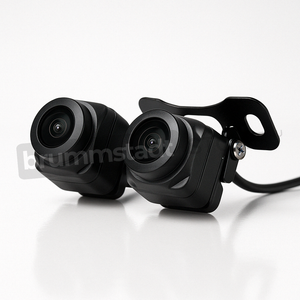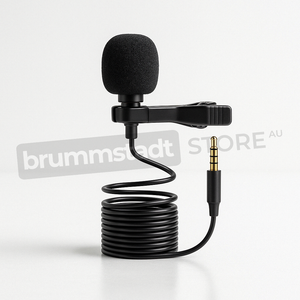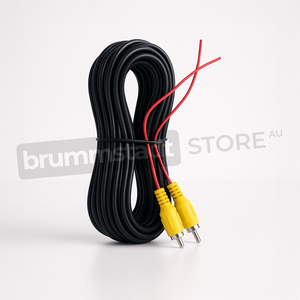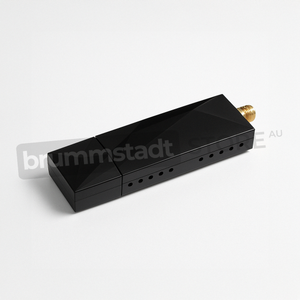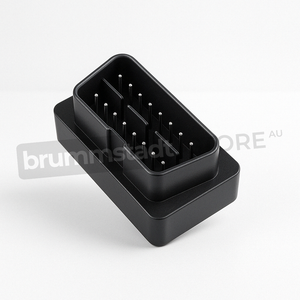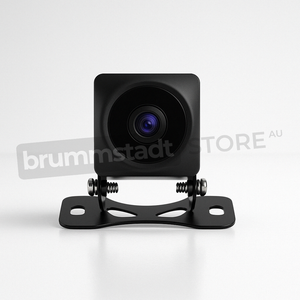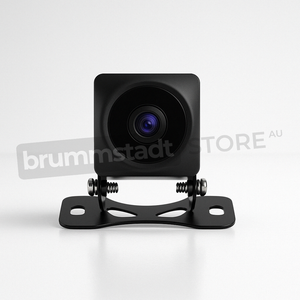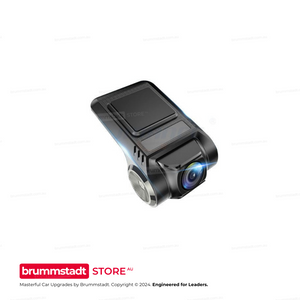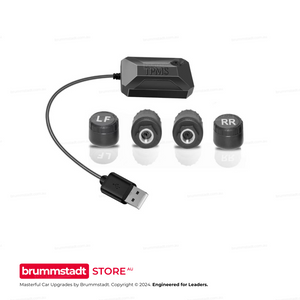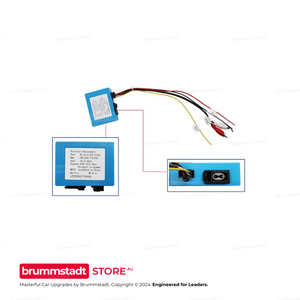Frequently Asked Questions
Everything you need to know about this head unit
Connect the single RCA cable with the yellow plug (included in your package) to extend your Bluetooth signal. This cable doubles as both a camera input AND a Bluetooth/WiFi antenna extension. The two small blue wires attached are antenna boosters that significantly improve connection stability. This simple connection takes 30 seconds and resolves 90% of Bluetooth issues. Make sure it's firmly connected even if you're not using a rear camera.
Try these proven solutions:
1. Quick Fix: Settings → Apps → Z-Link → Disable → Enable → Open (repeat each use)
2. Check Cables: Use the data/charge USB cable (not charge-only)
3. Bluetooth Setting: Disconnect all other Bluetooth connections - CarPlay needs exclusive access
4. Factory Reset Z-Link: Find the pink 'RESET' app, restart, reconnect Bluetooth, then try Z-Link
5. Sound Issues: Switch audio source to 'AUX' or 'USB/AUX' in your vehicle menu
Most issues are resolved with step 1 or 3!
The processor differs between models: The 2/32GB has a 4-Core processor, while 4/64GB and 8/128GB models feature the powerful 8-Core Cortex-A55 processor. Combined with RAM differences: The 2/32GB model with its 4-Core processor and limited RAM may experience slowdowns with heavy multitasking. The 4/64GB with 8-Core provides smooth performance for most users - no lag, seamless app switching, and enough storage for maps and music. The 8/128GB with 8-Core offers maximum performance with its generous RAM allowing unlimited multitasking and massive storage for extensive media libraries. Think of RAM like your desk space - more RAM means you can have more apps open simultaneously without slowing down.
Absolutely normal! These head units are complete replacement systems with their own GPS antenna, microphone, and Bluetooth module. Your factory connectors for these features won't be needed anymore. The important connections are: main power harness, speaker outputs, and the yellow RCA cable (even if not using a camera - it extends Bluetooth range). Any leftover factory plugs can be safely tucked away. If you're unsure about any connection, our support team is here 7 days a week.
Z-Link updates are handled through system firmware updates. Go to Settings → System → System Update. If an update is available, download it to a USB drive (FAT32 format) and install. Important: Never download Z-Link APKs from unofficial sources - they won't work and may cause issues. If you're having compatibility issues with newer iOS versions, the disable/enable workaround (Settings → Apps → Z-Link) usually resolves them while waiting for official updates.
Consider your usage:
• 2/32GB (4-Core): Budget option - fine for basic use, but may lag with multiple apps due to 4-Core processor and limited RAM
• 4/64GB (8-Core): Sweet spot - smooth Android Auto/CarPlay, multitasking, and ample storage
• 8/128GB (8-Core): Premium choice - unlimited multitasking, massive storage, future-proof for years
Most customers choose 4/64GB for the perfect balance of performance and value. The extra RAM makes a huge difference in daily smoothness!
The yellow RCA cable's blue antenna wires also boost WiFi signal! Make sure this cable is connected. Additionally, try these tips: Position the blue antenna wires away from metal surfaces, check that your phone's hotspot is set to 2.4GHz (not 5GHz) for better range, and ensure the head unit's WiFi sleep policy is set to 'Never' in Settings → WiFi → Advanced. For best performance with wireless CarPlay, keep your phone within 1-2 meters of the head unit.
Go to Settings → Sound → Equalizer and adjust to your preference. For more volume, increase the 'Loudness' setting. The 4/64GB and 8/128GB models have superior audio chips that provide cleaner, louder sound. If you have an amplifier, use the RCA outputs for best quality. Also check Settings → Factory Settings (password usually 126) → Audio settings for additional gain controls. Remember: higher-spec models (4GB+) include premium audio components for noticeably better sound.
Yes! Most vehicles work instantly. If not, use the steering wheel learning app: tap the steering wheel icon, press each button on your wheel, and assign functions. For newer vehicles with CANbus, we provide CANbus modules for automatic setup. Some vehicles may need the Key1/Key2 wires connected (usually included in our harness). If you're having trouble, let us know your exact vehicle model and we'll provide specific instructions.
We offer a 30-day return policy. If it doesn't fit or there's a compatibility issue, we'll work with you to resolve it. If you change your mind, a 20% restocking fee applies. Our team verifies compatibility before shipping to minimize issues. We provide installation support 7 days a week to help resolve any problems. With our 3-year warranty and Australian-based support, you can purchase with confidence. Full details in our Refund Policy.
Historical Evolution of the Kia Sorento:
First Generation Sorento (2002–2009):
Entering international markets at the turn of the century, the original Kia Sorento made a notable debut offering substantial value and rugged capability. Initially built upon a traditional body-on-frame platform, the first-generation Sorento found international favor—particularly in North America, Asia, Australia, and Europe. Equipped with capable four-wheel-drive systems and robust powertrains, these early Sorento variants were known particularly for their towing prowess, durability, and utility-focused character. In Australia, notably, its affordability, reliability, and solid off-road credentials bolstered popularity among families and adventurers alike, establishing a dependable reputation that remains pivotal to its lasting appeal.
Second Generation Sorento (2010–2014):
Marking a profound yet carefully calculated evolution, Kia reimagined the Sorento significantly for its second generation. Moving away from separate frame construction toward a modern unibody design, the updated Sorento achieved substantial improvements in ride comfort, fuel efficiency, safety ratings, and versatility, better aligning with rising expectations of crossover-oriented buyers. This generation demonstrated improved interior quality and design coherence alongside more refined handling and ride dynamics. It resonated positively across markets—from Europe and North America to Australia and Asia—as buyers valued the elevated cabin experience, modern design, practical seven-seat configurations, and comprehensive feature packages presented against attractive pricing.
Third Generation Sorento (2015–2020):
Aiming even higher, Kia refined and uplifted expectations with the 2015–2020 third-generation Kia Sorento. This iteration displayed mature design sophistication, featuring a striking exterior reflecting the brand’s evolving aesthetic identity and confidence. Available seating configurations included spacious five-and-seven-seat arrangements frequently praised for practicality, comfort, and intuitive ergonomics. Interior finishes noticeably improved, incorporating higher-grade materials and modern layouts aligned toward passenger-centric convenience.
Underneath its sleek exterior lay advanced engineering considerations for increased robustness, agility, and stability. Multiple engine options—including efficient four-cylinder petrol and diesel units plus a powerful V6 petrol variant—offered flexibility and catered to diverse international tastes. Improved handling refinement, suspension tuning, and sound insulation rewarded drivers with quieter, composed on-road characteristics suitable for both urban commutes and relaxed long-distance travels.
Technologically, Kia stepped forward substantially here, implementing significant safety advancements including blind-spot detection, forward collision warning, autonomous emergency braking, lane departure warnings and adaptive cruise control on higher trims. Infotainment likewise progressed considerably, presenting intuitive touchscreen interfaces and expanding onboard connectivity capabilities; however, original factory units sometimes fell just short of contemporary expectations regarding smartphone compatibility.
Complementing the Modern Sorento – Aftermarket Integration Solutions:
Owners of the 2015–2020 Sorento who seek broader connectivity and richer technological interaction find tailored solutions with aftermarket head units like those available via Brummstadt. A carefully matched infotainment system suited particularly for the Kia Sorento’s cabin structure adds substantial convenience, unlocking versatile capabilities with both wired and wireless compatibility for Apple CarPlay and Android Auto.
These advanced aftermarket solutions ensure effortless access to navigation tools such as Google Maps and WAZE as well as easy interaction with widely used messaging and audio streaming services. A scenario nicely illustrating these conveniences is easily visualized: imagine relaxing for dinner with family or close friends, smartphone navigation instructions to your next stop set organically right from the dinner table. Upon entering the vehicle, the preprogrammed map seamlessly transitions to the Brummstadt-equipped head unit through Apple CarPlay or Android Auto, allowing effortless, distraction-minimized continuation of the journey—reducing stress especially in unfamiliar urban surroundings.
Additionally available HD 1080p dual (front and rear) camera systems enhance practicality and security considerably. Offering clear, continuous recording, they boost confidence and provide drivers documentation should unforeseen events occur—an appreciated feature especially relevant in crowded cityscapes or bustling highways.
Entertainment beyond conventional audio streaming further distinguishes these advanced head units. Passengers, for example, can directly connect joysticks through provided USB ports, converting idle commuting moments into shared onboard entertainment experiences. Meanwhile, integrated smart voice control compatibility allows straightforward hands-free management of phone, navigation, multimedia playback, and even extends intuitively beyond the vehicle itself; users can issues commands like "Hey Siri, turn on the porch lights,” smoothly integrating vehicle-based interactions with smart home ecosystems.
Enhanced Practicality, Comfort, and Driving Satisfaction:
The 2015–2020 Kia Sorento's key strengths include spacious practicality, reassuring safety features, refined ride characteristics, and thoughtfully executed comfort elements tailored specifically for family-level scenarios or long-distance excursions. Its composed driving dynamics, flexible seating arrangements, and strategic technology integration positioned it as a capable everyday vehicle widely respected among international consumers.
By incorporating tailored, thoughtfully selected contemporary infotainment replacements specifically designed by reputable providers such as Brummstadt, the Sorento significantly amplifies connectivity convenience, enjoyment of drives, passenger interactions, and modern multimedia possibilities. These technological components do not merely serve aesthetic or superficial purposes, but genuinely build upon an already pleasant interior environment, creating additional layers of practical convenience, entertainment potential, and everyday satisfaction on each journey undertaken.
Through consistent evolution and significant growth in refinement, capability, comfort, and connectivity, the Kia Sorento from 2015 to 2020 achieved notable recognition around the globe—a genuinely appealing and balanced vehicle admired across varied lifestyles and locales.


















